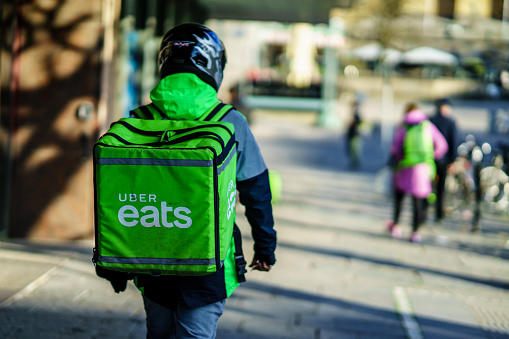When people imagine tech workers, they often think of those who hold higher-paying, white-collar positions, such as software engineers and executives. However, with the rise of apps like Uber, Lyft, DoorDash, and more, tech workers also include those within the gig economy. Although the tech industry is often seen as offering economic benefits to whoever works within it, the unfortunate reality for many gig workers is one of being underpaid and exploited by the apps they work for.
Recently, companies like DoorDash and Uber have come under heavy fire for their labor practices. Earlier this year, DoorDash fashed public criticism for its questionable tipping scheme. The app was taking from people’s tips in order to meet its guaranteed payout for drivers. For example, if DoorDash told a driver they would make $10 on an order and a customer tipped the driver $5, DoorDash treated that as a credit towards the original payout. In other words, the driver only got $10, and DoorDash pocketed the extra savings.
Although DoorDash CEO Tony Xu announced changes to the company’s compensation model last week — which still leaves a lot unanswered — the problem didn’t exist with just one app. Instacart was found to also use tips to subsidize delivery payments. Despite Instacart originally defending it’s payment model like DoorDash did, the company eventually made changes to its tipping structure in February.
When it comes to improving gig apps, not screwing over your workers by taking money intended for them is one obvious way to do so. However, guaranteeing that doesn’t happen is a whole other problem within itself. While Instacart and DoorDash both eventually changed their policies, gig apps such as Uber have also been previously exposed for seriously underpaying their drivers.
One way to encourage change is by forcing apps to be transparent. Gig apps get away with underpaying users because, to be frank, customers don’t really know how the compensation models work. Gig workers themselves can and do expose unfair practices, but that puts their jobs at risk. Transparency is one way to put a preventative measure into place so it’s harder for gig apps to enact predatory payment models.
This solution was suggested by Gig Workers Rising, a community of app and platform workers who are organizing for better wages, working conditions, and jobs.
Last week, Chicago Rideshare Advocates — a labor advocacy group — shared a screenshot of an Uber driver’s payment. According to the screenshot, the rider paid $23.25, while the driver received only $5.58.
“Riders should demand Uber tell them how much a driver is getting paid for the ride they are on. The lack of information allows Uber to get away with paying drivers next to nothing,” Gig Workers Rising wrote in a tweet.
Riders should demand @Uber tell them how much a driver is getting paid for the ride they are on.
This lack of information allows Uber to get away with paying drivers next to nothing. https://t.co/DRwZjSSFWz
— Gig Workers Rising (@GigWorkersRise) July 25, 2019
Groups like Working Washington are also advocating to establish a minimum pay floor. With the PayUp campaign, Working Washington wants to ensure that apps pay at least $15 per hour, along with the cost of mileage and other expenses.
The campaign wants to make sure that tips go to the workers as a “supplement to what a company is paying, not a substitute.” Lastly, Working Washington is also calling for increased transparency, including a detailed breakdown of jobs so workers are aware of why they’re being paid what they are.
In addition to payment issues, gig workers have to deal with being classified as independent contractors, rather than employees. This leaves them open to increased vulnerability and Uber drivers have been organizing around the issue for some time.
Uber recently settled a class-action lawsuit originally brought against the company in 2013. The suit claimed that Uber classifies drivers as contractors so it can avoid paying a minimum wage and providing them with benefits. It also forces drivers to cover their own daily expenses, like gas and the wear-and-tear that driving for Uber results in.
Perhaps the biggest issue with gig apps was summed up by San Diego Assemblywoman Lorena Gonzalez during a Senate hearing.
“We have companies where CEOs are making $45 million a year…and their drivers are sleeping in their cars. There is something fundamentally wrong when we have allowed this situation to get to this point,” Gonzalez said, according to the Los Angeles Times.

